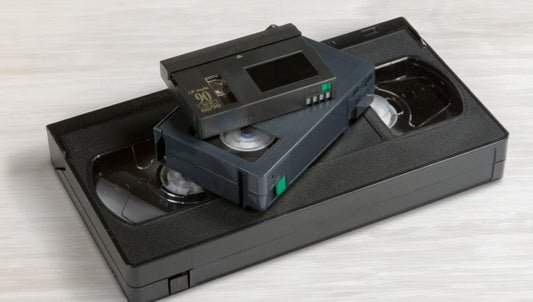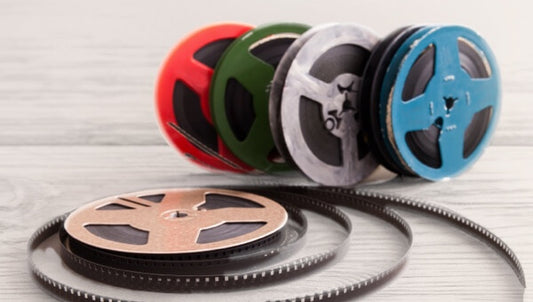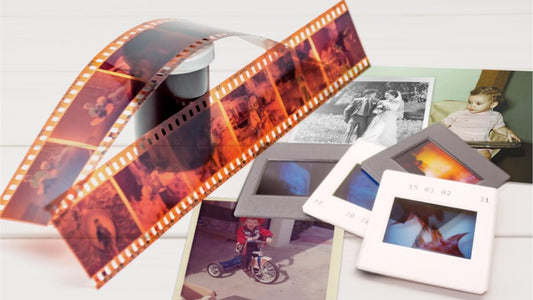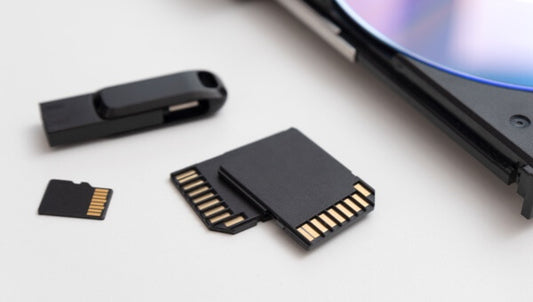Watching old VHS tapes can be a nostalgic experience, but it often comes with a familiar frustration: distorted images, fuzzy lines, or shaky playback. These issues are usually connected to VHS tracking, a feature built into VCRs that helps align the tape with the playback heads. Without proper tracking, your favorite home movies or classic films may look almost unwatchable. At Capture, we know how important these memories are, so learning what VHS tracking is, and how to fix it, can help you enjoy clearer playback before you consider more permanent solutions like digital conversion.
What is VHS Tracking?
When you insert a VHS tape into a VCR, the machine uses spinning heads to read the magnetic signals on the tape. However, no two tapes are exactly alike. Slight differences in recording, wear, or even the brand of VCR used can lead to playback problems. That’s where VHS tracking comes in. Tracking is the VCR’s way of adjusting the angle and alignment of the heads, so they properly read the tape.
Poor tracking results in:
- Horizontal lines across the screen
- Rolling or jumping pictures
- Distorted or static-filled sound
By adjusting VHS tracking, you’re essentially syncing the tape and the player, so they work together smoothly.

Why Tracking Issues Happen
Tracking issues are often linked to the physical condition of the tape and the VCR. Over time, dust, humidity, and natural wear can cause the tape to degrade. This means the alignment might be harder to maintain. Some VHS tape types, such as extended play (EP) or long play (LP), are especially prone to tracking problems because they pack more recording time into the same length of tape, sacrificing quality in the process.
Other common causes include:
- Using tapes recorded on one machine and playing them on another
- Dirty or worn VCR heads
- Damaged or stretched tape edges
- Low-quality recording speed that reduces tape stability
Manual VS Automatic Tracking
Most VCRs feature two tracking modes: automatic and manual. Automatic tracking attempts to fix alignment without user input. In many cases, this works well. But when automatic adjustments fail, you’ll need to switch to manual control.
Manual tracking is usually done with buttons on the VCR or remote, labeled “Tracking +/–” or similar. By pressing these buttons, you can fine-tune the playback until the lines disappear, or the sound clears up. The goal is to find the point where both the video and audio are stable. Adjustments may take a few seconds to take effect, so it’s best to move slowly rather than rapidly pressing the buttons.
Practical Steps to Fix VHS Tracking
Fixing VHS tracking can feel intimidating, but the process is straightforward. Here are some easy steps:
- Clean the VCR heads: Use a cleaning cassette or carefully clean the player’s heads to remove dust.
- Check automatic tracking: Let the machine try to adjust first.
- Switch to manual: Use the tracking buttons to fine-tune playback.
- Rewind and replay: Sometimes rewinding a tape resets alignment.
- Try another VCR: If one machine struggles, another might play it better.
- Seek professional help: For damaged tapes, consider VHS tape repair before playback.

When Tracking Can’t Fix Everything
While tracking fixes many playback issues, it’s not a cure-all. Severely damaged tapes may still show distorted images even after adjustments. Worn-out tapes can lose portions of audio or video permanently because the magnetic coating that holds the signal is physically deteriorating.
In these cases, the best approach is to stabilize the playback as much as possible using tracking and then digitize the content. Choosing to transfer VHS to digital allows you to preserve the footage in a more reliable format, preventing further degradation. Digital files don’t suffer from tracking issues, tape wear, or machine compatibility problems, making them easier to share and store.
Tips to Protect Tapes and Improve Playback
To get the most out of your VHS collection, combine good tracking habits with proper storage and care:
- Store tapes in a cool, dry place away from sunlight
- Rewind tapes fully before storing
- Avoid leaving tapes in the VCR
- Limit how often you play originals—use copies when possible
- Invest in a high-quality VCR for better playback
These steps reduce wear and make tracking adjustments more effective. If your tapes hold important family memories, professional digitization may be the safest long-term option.
The Role of VHS Tracking in Preserving Memories
VHS tracking may sound technical, but at its core, it’s about keeping your memories watchable. Every flickering home movie or family celebration recorded on tape relies on proper alignment to be enjoyed today. By understanding how tracking works and taking the time to adjust it, you can recover clear images and sound that might otherwise seem lost.

Still, VHS tracking is a temporary solution. Tapes will continue to degrade with age, no matter how carefully they are stored or played. That’s why digitizing old collections remains the best long-term plan. Whether you choose DIY equipment or professional services, the goal is the same: to preserve your memories in a format that won’t fade away with time.
Save Your Memories the Right Way
VHS tapes are fragile and tracking problems are one of the most common obstacles people face when revisiting old collections. VHS tracking is the key to syncing the tape with the VCR for smooth playback, and while adjusting it can improve quality, it isn’t always enough for heavily damaged tapes. Cleaning your equipment, using manual controls, and considering VHS tape repair or digital conversion are all ways to extend the life of your recordings. For lasting preservation, the best solution is to digitize home movies with Capture before time takes its toll.











